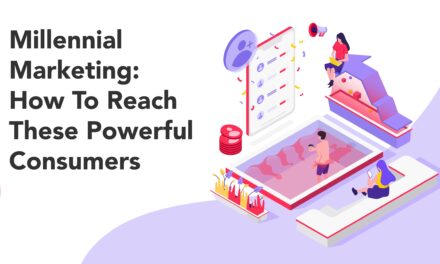Today’s consumers are increasingly demanding more from companies. Customers expect products, services, and information that cater to their individual needs and desires. It’s no surprise, then, that delivering personalized experiences to customers is clearly a top priority of marketers. Personalization is a powerful way to communicate with customers. And if you can customize their particular needs to your business or service, you can win their loyalty—and their business too.
It’s important that brands recognize who and where their target audience is and how likely they are to adopt their product or services. Let’s review why, how, and where you should start.
What is a Marketing Persona?
A persona represents a segment of audience members who exhibit similar behaviors in purchasing decisions. By identifying their distinct preferences or needs, you can reveal what is personally meaningful to each targeted audience. Personas inform market and customer strategies to guide the business toward customer-centricity. They reveal emotional tendencies and triggers as well as desired social and virtual environments. They become a key decision-making tool to evolve your content messaging and can even predict the success of content resonance.
How are Personas Built?
The process of creating customer personas starts from many resources gathered from diverse platforms, from the smallest of details in your site analytics to actual conversations with real-life customers.
Marketers need to cast a wide net to uncover information that will develop into compelling personas. When researching and building personas, you’ll need to consider who the person is, demographics (age, gender, and location), how best to speak to them, what they value, and the style and tone of marketing message that will reach them. So where do you get all the information you need to develop your personas? Here are a few areas to consider:
- Involve core teams. Identify groups that interact with customers and manage customer data to share their perspective on your target audience’s needs. This may include salespeople, customer service representatives, the C-level suite, and of course marketing.
- Review your social media platforms. Marketers can glean useful insight through social channels, which allow different aspects of your audience’s personality to shine through. When customers share their concerns that presents a valuable opportunity. Data experts use listening tools to uncover customer frustrations, pain points, feedback, and questions they are asking. The social intelligence data can then be filtered to reveal the most relevant details to inform your messaging.
- Ask your audience questions. Who knows your customers better than they know themselves? Conduct surveys and one-on-one interviews. This process can reveal deep insight into your customers. During the analysis process, patterns will begin to emerge. Researchers will discover audience goals, values, and pain points that will resonate the most with them. This, in turn, will yield the most valuable insight: how to accurately personalize the user experience.
Who Cares?
The creation of personas helps us all—in marketing, sales, product, and services. They have become increasingly necessary to achieve success and they can transform the customer experience. Without a persona-based content marketing strategy, you run the risk of letting your competitors influence buyers. The internet is filled with content and brands fighting a constant battle to cut through the noise with compelling, unique content that tells the audience something they don’t already know, gives a new angle on a topic, or entertains. Utilizing personas can enormously benefit the entire organization by differentiating it from the competition.
Why Do It?
The science behind personas may be difficult to grasp, but it is essential that brands understand it. They must get into the shoes of their target audience and try to appeal to their interests and emotions. Having a deep understanding of your buyers is critical to content creation. For the purpose of marketing, it assists in the delivery of content that will be most relevant and useful to your audience. Creating the personalized content at the right time to attract your ideal visitors will help convert them into leads and close the sale.
How Many Personas Do You Need?
To gain the greatest understanding of customers and prospects, it is recommended that you make three to seven personas to represent your audience. This number is big enough to cover the majority of your customers and to represent their needs and motivations. The rule of thumb is that when you naturally start to identify patterns and predict interviewee answers, you have found enough people to internalize these archetypes.
How Can Personas Be Used to Personalize Your Marketing?
By developing personas, you can craft messaging that both appeals to your target audience and helps tailor content to best fit the goals of buyers. With all of your buyer personas defined, you will have a better idea of who, how, and where your campaigns will achieve the greatest success. The marketing benefits of investing in personas is that it ultimately enables you to design first-class, personalized user experiences at all touchpoints—websites, landing pages, email, mobile, and social media channels.
The Persona Lifecycle
Finally, it’s important to remember that persona building is not something you do once. It’s a process that requires continual updating to stay current with emerging trends, changing economic times, and new products and services. In addition, companies can optimize their investment in personas by sharing them across the entire organization. Personas are vital to building personalization, nurturing customer advocacy, encouraging lead interaction, and increasing sales productivity. Applying them strategically at each stage of your customer lifecycle in a meaningful way is important at every level of your business.







